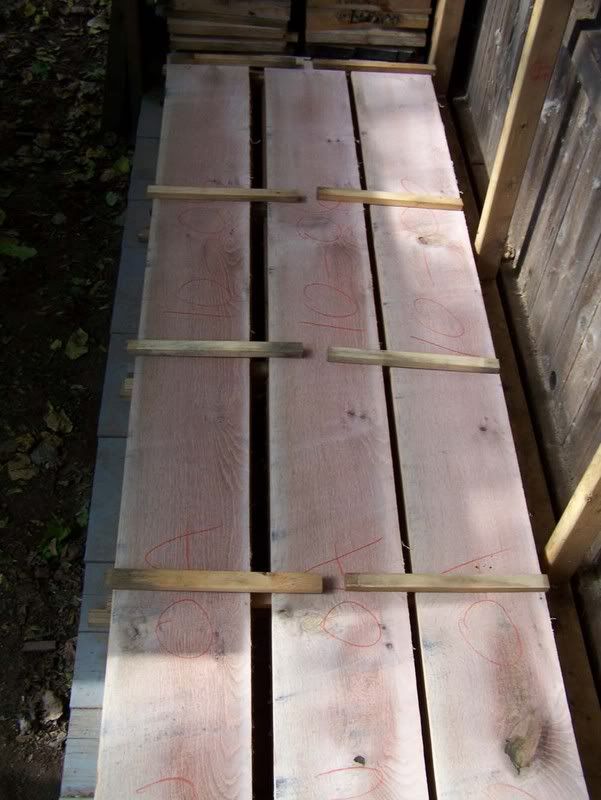Is there a way to tell the difference between rift and quartered hard maple..... This winter I plan on doing a bunch of maple and want to have a good system in place before the logs are on the ground. How do you label your inventory?
As scottr said, just look at the end of the board... if the rings are 90 to the board you have pure quartersawn, less than that but not more than 45 degrees, call it riftsawn. If you're having trouble seeing the rings (maple can be hard due to it being so homogeneous) you can cut the end of the board with a saw to get a cleaner end, and/or wet down the end so you can see the rings a little better. Often, especially on baords sliced from a smaller log, you will have half the board quartersawn and the other side riftsaw or less, depending on where in the log it was milled from.
Inventory... by the time you have accumulated several thousand bd ft of lumber of all species, keeping track of what was milled when can be a nightmare. I do it by marking each board with a lumber crayon. Sounds like a pain, but it goes pretty quick and you will be glad you did when you are going through your piles looking for something later. I simply put two letters for species and then the month and year. CH for cherry, WA for walnut, AS for ash, OA 10-06 as in the pic below is Oak milled Oct 2006.

My convention is first two letters of the species. On the rare occasion that there are two species with same first two letters like Cherry and Chestnut, the lesser species, chestnut, would have the first and LAST letter of the name, CT. Rarely but once in a while I want to further clarify for later so I will add another letter in front of the two. Example would be White oak. Most of the oak I mill is red oak, so that just gets OA... but when I mill white oak I will put a W in front, W OA so I know later that this stuff is white and not red. Once you run it through the planer in the woodshop you can tell the diff between red and white oak easily, but when it's rough milled and dry in a stack, they look very similar. Ash looks a lot like oak in a stack, and maple looks very similar to other woods like gum and sycamore until you plane them down to see the grain. I know this all sounds kinda anal... but believe me when you have stacks and stacks of lumber you need something like this to keep track of what it is and how old (and thus how dry) a certain stack is.





